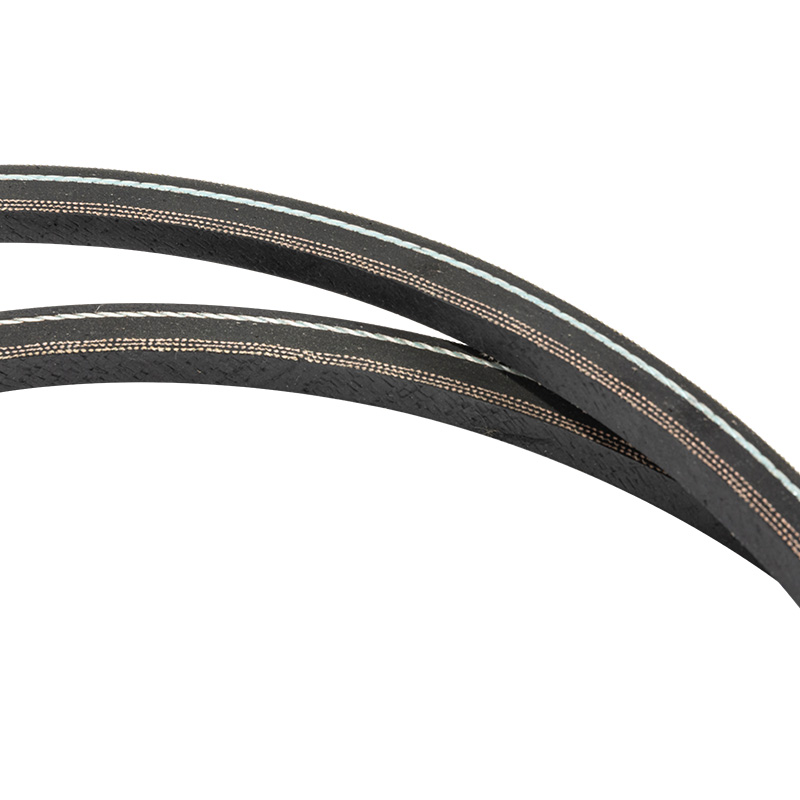The design of Raw Edge V-Belts plays a crucial role in reducing slip and enhancing power transmission in automotive systems. Here's how the design features contribute to these performance aspects:
Toothed Structure: The integration of a toothed or cogged structure on the inner surface of Raw Edge V-Belts serves a multifaceted purpose. This design feature encompasses precisely machined teeth that mesh with corresponding grooves on the pulley. The interlocking nature of these components creates a mechanical engagement, reducing the likelihood of slip by providing a positive drive. This becomes particularly crucial during rapid accelerations or decelerations, where conventional V-Belts may be more susceptible to slipping due to their smooth inner surfaces.
Flexibility and Conformity: The inherent flexibility of Raw Edge V-Belts is meticulously engineered to ensure optimum conformity to the varying contours of pulleys. This is achieved through the strategic use of materials and manufacturing processes that allow the belt to flex and bend seamlessly around pulley surfaces. The result is an expanded contact area between the belt and the pulley, promoting a more substantial grip. This heightened adaptability is instrumental in applications where pulley diameters may differ or where there are irregularities in the pulley surface.
High-friction Materials: Raw Edge V-Belts are crafted from materials with exceptional frictional characteristics. These materials are selected based on rigorous testing and analysis to achieve an optimal balance between durability, flexibility, and friction. The high-friction composition of the belt materials ensures a superior grip on the pulley, even under conditions of elevated load or when operating in environments with increased temperatures. This deliberate material selection is a testament to the commitment to reliability and performance in automotive power transmission.
Heat Dissipation: The sophisticated design of Raw Edge V-Belts includes features aimed at efficient heat dissipation. This involves the incorporation of materials and structures that disperse heat generated during operation. Heat, if not managed effectively, can alter the coefficient of friction and lead to performance degradation. By facilitating heat dissipation, Raw Edge V-Belts maintain consistent performance levels, mitigating the risk of slip in high-temperature operating conditions or during prolonged usage.
Uniform Tension Distribution: The design philosophy of Raw Edge V-Belts prioritizes the achievement and maintenance of uniform tension throughout the entire length of the belt. This is achieved through meticulous engineering of the belt structure and tensioning systems. Uniform tension distribution is pivotal in preventing localized slippage, ensuring that power is transmitted consistently across the entire length of the belt. This attention to tension balance is a critical factor in the longevity and reliability of the belt in automotive applications.
Reduced Belt Bending Stress: Raw Edge V-Belts are designed with a meticulous focus on minimizing bending stress during operation. This design consideration extends to the core structure of the belt, ensuring that it bends with minimal resistance around pulleys. Reduced bending stress not only contributes to smoother power transmission but also acts as a proactive measure against slip. This design approach is particularly advantageous in applications where frequent changes in speed and direction occur, minimizing wear and tear on the belt.
Resistance to Wear: The design of Raw Edge V-Belts incorporates advanced features to enhance resistance to wear and abrasion. This involves the use of durable materials and specialized manufacturing techniques that withstand the demanding conditions of automotive applications. The goal is to minimize wear on the belt surfaces, ensuring that the pulley contact areas remain robust and effective over an extended operational lifespan. This commitment to wear resistance is pivotal in maintaining the long-term efficiency of the power transmission system, reducing the risk of slip and associated performance issues.
Automotive Raw Edge V-Belts


 View More >>
View More >>
 View More >>
View More >>
 View More >>
View More >>
 View More >>
View More >>
 View More >>
View More >>
 View More >>
View More >>
 View More >>
View More >>
 View More >>
View More >>
 View More >>
View More >>
 View More >>
View More >>
 View More >>
View More >>
 View More >>
View More >>